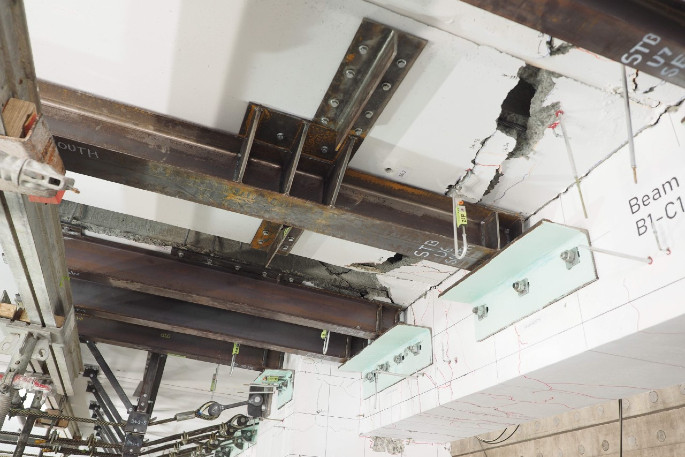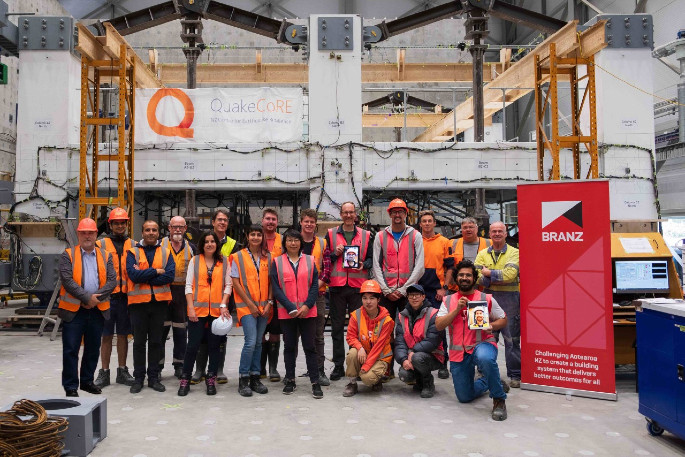A unique collaboration of New Zealand researchers have found the answers to fix the distinct New Zealand construction threat of earthquake-prone precast concrete hollow-core floors.
'The seismic issues around hollow-core floors are not new but were brought into the spotlight by the damage caused in the Wellington CBD by the Kaikōura earthquake,” says Nicholas Brooke, coordinator of the ReCast Project.
The ReCast Project has spent the last four years testing and verifying retrofit solutions to strengthen buildings with precast floors, which have been widely used in New Zealand construction since the mid-1980s.
Thee project team, led by experts from the Universities of Canterbury and Auckland and supported by funding from the Earthquake Commission, BRANZ and Concrete NZ, will publish its findings in the Structural Engineering Society NZ (SESOC) journal to provide guidance for engineers and building owners considering retrofit options for existing buildings.
'We focused on the least complex and most affordable retrofit solutions, tested them, verified them and developed design guidance for the different technologies,” says Nicholas.
 Examples of some of the retrofit options for precast concrete floors as they are earthquake-tested at the University of Canterbury. Photo: Supplied.
Examples of some of the retrofit options for precast concrete floors as they are earthquake-tested at the University of Canterbury. Photo: Supplied.
EQC Chief Resilience and Research Officer, Dr Jo Horrocks, says that the Recast Project strikes at the heart of EQC's vision of investing in research that will strengthen buildings and protect people.
'Precast hollow-core floors have been recognised as a seismic risk for many years and EQC has been eager to support any research that will tackle this issue,” says Dr Horrocks.
'This research is incredibly valuable and detailed and we hope it will give engineers and building owners, especially in the Wellington area, the confidence to start repairing a building instead of demolishing them. Many owners may have been holding off investing in repairs, in fear of having to do more repairs later, but now they can be confident a retrofit will work.”
'New Zealand has suffered devastating impacts from earthquakes over the past 11 years, but from that trauma we have learned a huge amount and developed world-leading science and engineering solutions.
'We will continue to fund excellent research like this, because we know it saves lives and protects property – it's all part of our role to help New Zealand to be better prepared for the next earthquake,” says Dr Horrocks.
Nicholas Brooke explains that precast concrete hollow-core floors have been a favourite option for New Zealand construction industry and developers since the mid-1980s and cover about 1.5 square kilometres of buildings floors around the country.
'The rest of the world was not so excited about hollow-core floors, so this is really a distinct New Zealand issue,” says Brooke, who explains that the weakness of the system was exposed in the 1994 Northridge earthquake in North America where buildings with hollow-core floors were severely damaged.
Professor Des Bull at the University of Canterbury was concerned about the New Zealand context and thanks to EQC funding spent nearly two decades investigating hollow-core floors before developing guidance on their assessment with Professor Richard Fenwick.
'Unfortunately, they published their findings shortly before the Darfield earthquake and their findings were a bit lost in the chaos of those earthquakes,” says Brooke, who adds the subject did not receive sufficient industry attention until the damage caused by the Kaikōura earthquake galvanised authorities and researchers into action.
The ReCast Project was launched with the universities in Canterbury and Auckland dedicating four PhD students and a Masters students for four years.
'It was truly a unique collaboration with PhD students from Canterbury working in the Auckland lab and vice versa, which we believe had not happened previously to anything like the same extent,” says Brooke.
The result is the largest SESOC journal with 11 articles and over 200 pages of design guidance for seismic engineers.
'It is the culmination of 25 years of research, building on the work of Des Bull and funding by EQC, that will be hugely valuable to seismic engineers in New Zealand and abroad.”
Please click on this link for video content of some of the testing.



0 comments
Leave a Comment
You must be logged in to make a comment.